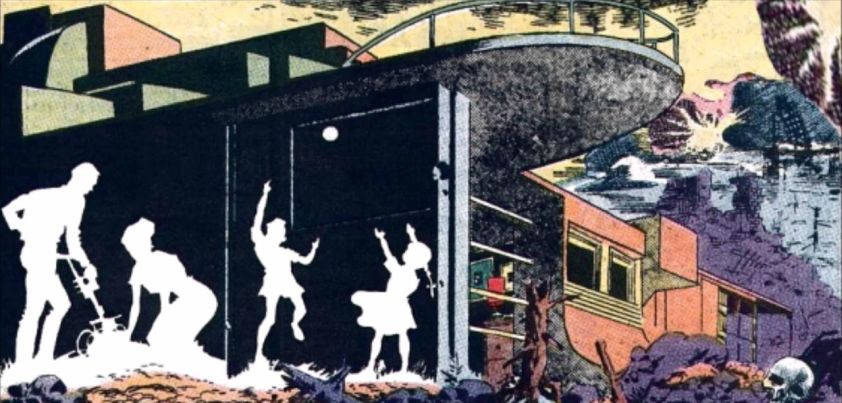 This science-fiction story from Ray Bradbury chronicles the last day in the ‘life’ of an automated house that has survived nuclear war. Although the house’s inhabitants are dead, represented by shadows on the outside walls, it has continued its daily cycle of programmed activity. Major themes are the danger of nuclear war, and the consequences of taking technology too far. In replacing almost all human tasks in their daily life, the householders were dependent on technology. Ironically, that same technology built the bombs that destroyed them. Other themes include death (the dog, house and humankind), nature (the only survivor), dystopia.
This science-fiction story from Ray Bradbury chronicles the last day in the ‘life’ of an automated house that has survived nuclear war. Although the house’s inhabitants are dead, represented by shadows on the outside walls, it has continued its daily cycle of programmed activity. Major themes are the danger of nuclear war, and the consequences of taking technology too far. In replacing almost all human tasks in their daily life, the householders were dependent on technology. Ironically, that same technology built the bombs that destroyed them. Other themes include death (the dog, house and humankind), nature (the only survivor), dystopia.
The version of the story reproduced here is the one that appeared in Bradbury’s 1950 book, The Martian Chronicles. The story first appeared in Collier’s magazine. The magazine version was slightly longer because of the following brief introduction:
The house was a good house and had been planned and built by the people who were to live in it, in the year 1980. The house was like many another house in that year; it fed and slept and entertained its inhabitants, and made a good life for them. The man and wife and their two children lived at ease there, and lived happily, even while the world trembled. All of the fine things of living, the warm things, music and poetry, books that talked, beds that warmed and made themselves, fires that built themselves in the fire-places of evenings, were in this house, and living there was a contentment.
And then one day the world shook and there was an explosion followed by ten thousand explosions and red fire in the sky and a rain of ashes and radio-activity, and the happy time was over.